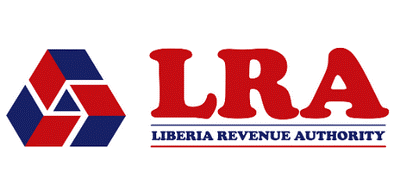Treasury and Risk Management Training Course
INTRODUCTION
Treasury and Risk Management Training Course is designed to provide participants with a comprehensive understanding of treasury functions and risk management practices within an organisation. It focuses on enhancing the skills needed to manage financial assets, mitigate risks, and optimize liquidity, while adhering to regulatory standards. This course is critical for professionals involved in corporate treasury, finance, risk management, and compliance roles.
Treasury and risk management are vital components of an organisation's financial health. This course delves into the tools, techniques, and strategies used to manage liquidity, optimize capital, and control financial risks such as interest rate, currency, credit, and market risks. In an increasingly volatile economic environment, this training equips professionals with the necessary skills to maintain financial stability, ensure compliance, and maximize value.
The Treasury and Risk Management Training Course equips participants with the practical knowledge and tools necessary to manage an organisation’s treasury function while mitigating risks effectively. By focusing on cash flow, liquidity, and financial risk management, participants will gain valuable insights into how to align treasury activities with broader corporate strategies, ensuring financial stability and regulatory compliance.
DURATION
5 days
TARGET AUDIENCE:
- Treasury professionals and corporate finance managers
- Risk managers and compliance officers
- Financial analysts and CFOs
- Bankers, investment professionals, and financial consultants
- Regulatory and audit professionals involved in treasury and financial risk
COURSE OBJECTIVES
By the end of the course, participants will be able to:
- Understand Treasury Management Functions: Gain a deep understanding of the role of treasury in managing cash flow, liquidity, and financial assets.
- Implement Risk Management Frameworks: Identify and mitigate financial risks, including interest rate, currency, credit, and market risks.
- Optimise Capital Structure: Explore capital management strategies and how to align them with organisational objectives.
- Manage Liquidity: Develop techniques for effective liquidity management, ensuring optimal cash positions for operational efficiency.
- Use Hedging and Derivative Strategies: Apply hedging instruments like forwards, futures, swaps, and options to manage financial risks.
- Comply with Regulatory Requirements: Understand the key regulatory frameworks impacting treasury and risk management.
- Utilise Treasury Technology: Leverage treasury management systems (TMS) and financial technologies to enhance efficiency in risk management and reporting.
COURSE CONTENT
Module 1: Introduction to Treasury Management
- Overview of Treasury Functions in an Organisation
- The Strategic Role of the Treasury Department
- Treasury Management vs. Corporate Finance
- Key Objectives of Treasury: Liquidity, Funding, Risk, and Return
- Centralisation vs. Decentralisation of Treasury Operations
Module 2: Cash Flow and Liquidity Management
- Importance of Cash Flow Forecasting and Management
- Liquidity Management Strategies and Tools
- Managing Short-Term and Long-Term Liquidity
- Working Capital Optimisation: Inventory, Receivables, and Payables
- Cash Concentration and Pooling Techniques
Module 3: Financial Risk Management Overview
- Understanding Different Types of Financial Risks: Interest Rate, Currency, Credit, and Market Risks
- Risk Identification, Assessment, and Quantification
- Risk Appetite and Risk Tolerance Frameworks
- Integrating Risk Management into Treasury Functions
- Setting Up a Risk Management Policy and Governance Structure
Module 4: Foreign Exchange (FX) Risk Management
- Sources of FX Risk: Transaction, Translation, and Economic Risk
- Tools for Managing FX Risk: Forwards, Futures, and Options
- FX Hedging Strategies for Global Organisations
- Case Study: Managing FX Exposure in a Multinational Corporation
Module 5: Interest Rate Risk Management
- Understanding Interest Rate Risk: Floating vs. Fixed Rate Exposure
- Tools for Managing Interest Rate Risk: Swaps, Caps, and Collars
- Yield Curve Analysis and Interest Rate Forecasting
- Interest Rate Risk in Debt and Investment Portfolios
- Hedging Interest Rate Risk Using Derivatives
Module 6: Credit Risk Management
- Assessing Counterparty Risk in Treasury Operations
- Credit Risk Management Tools: Credit Limits, Guarantees, and Collateral
- Credit Rating Systems and Their Role in Treasury
- Credit Risk in Trade Finance, Loans, and Investments
- Managing Credit Risk in Volatile Markets
Module 7: Market Risk Management
- Understanding Market Risk in Asset and Liability Management
- Value at Risk (VaR) and Other Risk Measurement Techniques
- Stress Testing and Scenario Analysis
- Managing Commodity Risk: Tools and Techniques
- Market Risk Reporting and Compliance
Module 8: Capital and Funding Strategies
- Strategic Capital Allocation: Equity vs. Debt Funding
- Managing Debt Portfolios and Leverage Ratios
- Funding Sources: Short-Term vs. Long-Term Instruments
- Structured Financing and Securitisation
- Capital Management During Economic Downturns
Module 9: Regulatory Compliance in Treasury and Risk Management
- Overview of Key Regulatory Frameworks: Basel III, MiFID, IFRS, Dodd-Frank
- Impact of Regulations on Treasury Functions
- Managing Regulatory Risks in Financial Transactions
- Reporting Requirements and Treasury Compliance Best Practices
- Case Study: How Regulatory Changes Impact Treasury Management
Module 10: Treasury Technology and Systems
- Introduction to Treasury Management Systems (TMS)
- Using Technology for Cash Management and Risk Reporting
- Emerging Technologies: Blockchain, AI, and Machine Learning in Treasury
- Automation in Treasury Functions: Improving Efficiency and Reducing Risks
- Best Practices for Implementing and Upgrading Treasury Technology
Module 11: Hedging Strategies and Derivatives
- Understanding Derivatives: Forwards, Futures, Swaps, and Options
- Hedging Strategies for Interest Rate and FX Risks
- Using Commodity Derivatives to Manage Price Volatility
- Accounting for Derivatives and Hedge Effectiveness Testing
- Case Study: Successful Use of Derivatives in Treasury
Module 12: Case Studies and Practical Applications
- Real-World Examples of Treasury and Risk Management in Corporations
- Group Exercises: Building Risk Mitigation Plans
- Lessons Learned from Treasury and Risk Failures
- Simulations: Managing Risk in a Crisis Scenario
CERTIFICATION
- Upon successful completion of this training, participants will be issued with Macskills Training and Development Institute Certificate
TRAINING VENUE
- Training will be held at Macskills Training Centre. We also tailor make the training upon request at different locations across the world.
AIRPORT PICK UP AND ACCOMMODATION
- Airport pick up and accommodation is arranged upon request
TERMS OF PAYMENT
- Payment should be made to Macskills Development Institute bank account before the start of the training and receipts sent to info@macskillsdevelopment.com
Treasury And Risk Management Training Course in Kenya
| Dates | Fees | Location | Action |
|---|---|---|---|
| 13/10/2025 - 17/10/2025 | $1500 | Mombasa |
|
| 20/10/2025 - 24/10/2025 | $4000 | Johannesburg |
|
| 27/10/2025 - 31/10/2025 | $1250 | Nairobi |
|
| 03/11/2025 - 07/11/2025 | $4950 | Dubai |
|
| 10/11/2025 - 14/11/2025 | $4000 | Johannesburg |
|
| 17/11/2025 - 21/11/2025 | $2900 | Kigali |
|
| 24/11/2025 - 28/11/2025 | $1250 | Nairobi |
|
| 01/12/2025 - 05/12/2025 | $4950 | Dubai |
|
| 08/12/2025 - 12/12/2025 | $1250 | Nairobi |
|
| 05/01/2026 - 09/01/2026 | $4,950 | Dubai |
|
| 12/01/2026 - 16/01/2026 | $1,750 | Mombasa |
|
| 19/01/2026 - 23/01/2026 | $2,900 | Kigali |
|
| 26/01/2026 - 30/01/2026 | $1,250 | Nairobi |
|
| 02/02/2026 - 06/02/2026 | $4,000 | Johannesburg |
|
| 09/02/2026 - 13/02/2026 | $4,950 | Instanbul |
|
| 16/02/2026 - 20/02/2026 | $2,900 | Kigali |
|
| 23/02/2026 - 27/02/2026 | $1,250 | Nairobi |
|
| 02/03/2026 - 06/03/2026 | $4,950 | Dubai |
|
| 09/03/2026 - 13/03/2026 | $4,000 | Johannesburg |
|
| 16/03/2026 - 20/03/2026 | $1,750 | Mombasa |
|
| 23/03/2026 - 27/03/2026 | $1,250 | Nairobi |
|
| 06/04/2026 - 10/04/2026 | $4,950 | Instanbul |
|
| 20/04/2026 - 24/04/2026 | $1,250 | Nairobi |
|
| 04/05/2026 - 08/05/2026 | $2,900 | Kigali |
|
| 11/05/2026 - 15/05/2026 | $2,900 | Kigali |
|
| 18/05/2026 - 22/05/2026 | $1,750 | Mombasa |
|
| 25/05/2026 - 29/05/2026 | $1,250 | Nairobi |
|
| 01/06/2026 - 05/06/2026 | $4,000 | Johannesburg |
|
| 08/06/2026 - 12/06/2026 | $2,900 | Kigali |
|
| 15/06/2026 - 19/06/2026 | $4,000 | Johannesburg |
|
| 22/06/2026 - 26/06/2026 | $1,250 | Nairobi |
|
| 06/07/2026 - 10/07/2026 | $2,900 | Kigali |
|
| 13/07/2026 - 17/07/2026 | $1,750 | Mombasa |
|
| 20/07/2026 - 24/07/2026 | $4,950 | Dubai |
|
| 27/07/2026 - 31/07/2026 | $1,250 | Nairobi |
|
| 03/08/2026 - 07/08/2026 | $4,000 | Johannesburg |
|
| 10/08/2026 - 14/08/2026 | $1,750 | Mombasa |
|
| 24/08/2026 - 28/08/2026 | $1,250 | Nairobi |
|
| 07/09/2026 - 11/09/2026 | $2,900 | Kigali |
|
| 14/09/2026 - 18/09/2026 | $1,750 | Mombasa |
|
| 21/09/2026 - 25/09/2026 | $1,250 | Nairobi |
|
| 05/10/2026 - 09/10/2026 | $2,900 | Kigali |
|
| 12/10/2026 - 16/10/2026 | $1,750 | Mombasa |
|
| 26/10/2026 - 30/10/2026 | $1,250 | Nairobi |
|
| 02/11/2026 - 06/11/2026 | $2,900 | Kigali |
|
| 09/11/2026 - 13/11/2026 | $4,000 | Johannesburg |
|
| 23/11/2026 - 27/11/2026 | $1,250 | Nairobi |
|
| 07/12/2026 - 11/12/2026 | $2,900 | Kigali |
|
| 14/12/2026 - 18/12/2026 | $1,250 | Nairobi |
|





















